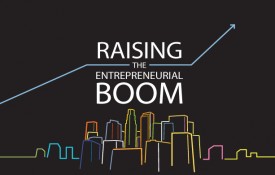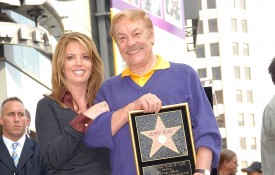Throughout our professional careers, we are taught to “stay in our lane”—which certainly has its upsides. By focusing on our own roles, goals, and tasks at hand, we are able to execute efficiently, maintain organizational structure, and avoid stepping on the toes of those around us as they navigate their own work.
That said, a quantifiable downside of requiring talent to stay soundly within a fixed lane is how that rigidity limits the imagination and caps the collaborative creativity of people. This is both a cultural disadvantage and a business risk, as it cannibalizes key opportunities to innovate. Creativity breeds invention, and business relies upon inventive new ideas (and their ideators) to remain relevant, impactful, and profitable in the rapidly evolving economic and technological paradigms that we find ourselves in.
We celebrate creativity, ingenuity, and what I like to call “multi-threatedness” in so many aspects of life. In sports and entertainment, we award the most dynamic players with “greatest of all time” titles, hall of fame inductions, and countless awards. And yet, corporate systems and certain leaders often seek to snuff these qualities out whenever they surface beyond the scope of any given role.
It’s as though the glimmer of an employee’s individuality is a direct threat to a business’s bottom line … when, in fact, it is likely quite the opposite. I would argue that the multi-hyphenated, multi-passionate professional who has cultivated a reputable personal brand or specialty outside of the business is actually an immense asset to a company, rather than a liability.
It starts with the person. Though there are those of us who have fully embraced the multi-passionate identifier, the truth is, every single person at every rung of business represents a rich tapestry of strengths, interests, and experiences. Those who may not consider themselves creative or dynamic outright are still likely able to arrive at uniquely creative solutions or inspire positive action from their teams, especially when supported and empowered by both their leadership and the corporate mission. This is why true leaders must be both creative and dynamic.

Survey-based research conducted by IBM discovered that creativity is considered the most critical leadership quality in business—even beyond integrity and global thinking—especially when polling leaders themselves. Creative and “transformative” leadership creates a trickle-down effect that can more than double productivity, increase profitability, and reduce absenteeism and turnover by more than half. As such, it is the responsibility of the leader to leverage their own creativity to draw out and nurture the multi-dimensionality of their teams, create a safe space for them to reveal unseen strengths, and to inspire, which Richard Branson has argued is the singular most important ability a leader can possess.
But what about those professionals whose multi-hyphenate passions and talents are a core part of their identity, their creativity, and their impact? Those who deem themselves “businesspeople” and have a creative streak to them? Those creators who are artistic and visual and understand the business strategy and economics behind the art that they produce? Those who can mesmerize an audience with their intellect and their magnetism? We keep telling people to be their “authentic selves,” but what if their authentic self shines so brightly that you don’t know what to do with it? Can we really expect the best thought leaders, team builders, and positive disruptors in business to limit all that passion, inspiration, and ideation solely to the role they are in at the company they lead? It would be reckless of us to assume so. And more and more often, especially in communities of color or historically underutilized communities, we are seeing these powerfully prismatic elements of the individual not only overlooked, but actively dimmed and dampened.
If we’re not tapping in to and empowering every single aspect/asset of that person with the understanding that their charismatic context adds value to the organization, we are leaving opportunity, market share, and, ultimately, revenue on the table.
In one of my previous roles, for example, I had a phenomenal colleague who was a brilliant data analyst with an impressive financial background. One day, after recruiting her to come work with me, I realized that she also had a passion for storytelling through the eyes of representation and inclusion. Given that the organization, a studio, was inherently creative, storytelling was its first language—and the two of us were able to sell the business case for supplier diversity more quickly and creatively than I could ever have anticipated from the job description I had hired her to fill. This additional talent, spark, and passion that I didn’t realize she had has since made a measurable business impact beyond that original organization, including her upcoming induction into the Advertising Hall of Fame. Had I not let her try things outside of her role as an analyst or project manager, it would have been a great loss to our organization.
You see, it starts with the person, led by curiosity, communication, and consideration. So often, when our teams show us parts of themselves that fall outside of the traditional scope of business—a passion project, a podcast, a philanthropic effort—it is the gut reaction of most employers to chalk it up to the individual trying to make a brand for themselves on company time and splitting focus from what they’ve been hired to do.
Yet, one of the truest tenets of business is that people do business with people they like and trust. In fact, “social selling”—where a salesperson or brand ambassador leverages their own personal social media channels to find, connect with, and convert prospects—has proven to outsell traditional sales techniques by 78%. Even if accompanied by an “ad” marker on a social media post, people are still 92% more likely to buy through other people who are vouching for a brand than they are to purchase from a corporate channel or advertising campaign. It then becomes a bit of a conundrum for employers to try to balance utilizing an individual’s personal brand and social channels for their own benefit while trying to box it out and contain it simultaneously.
Personal brands and networks have value, and employees are catching on to that fact more quickly than corporations. As a Glassdoor survey found, “87% of employees expect their employer to support them in balancing their life between work and personal commitments.”

So, how do we accomplish that? How can we look at multi-hyphenated “threatedness,” especially in the corporate world, with this new lens? How can we maximize, empower, and retain our top talent? We can start by looking at the job at hand and the timely opportunity to redefine roles.
Rather than remaining fixed to a specific job description or title, why not focus instead on the end goal for that role, with that particular person’s specific spectrum of skills at the top of your mind? What impact do you want them to make? What emotion or experience do you want them to tap in to for your audience? If the goal is to create buzzy excitement around a product, a typical marketer description may not suffice in saturated markets. If the goal is to create trust and empathy around a cause, that scope of work might look a little different for that nonprofit executive. If the goal is to create an unyielding belief that a person needs to spend their hard-earned money investing in a new revenue channel, especially in the current economic climate, that job may require nuanced creativity beyond that of the average business developer.
The key is to find the role or tasks that align with each person’s best possible impact or outcome. It involves listening and engaging with their interests outside of the office. It requires the right level of oversight (which varies between people, especially creatives) and surrounding them with a team that can learn from their genius while supporting their weaknesses. Again, it all starts with the person. Your people are your power, and when your most passionate people believe that you see them—really see them, for all that they are—studies have shown that those people will feel empowered to produce their best work.
As we infuse inspiration, empathy, empowerment, and humanity into professional settings, we may just start to see radically different outcomes—and we may start to see our people differently. We will see their jobs differently. And we’ll see results, including returns on investment, much differently, too.
Christine Simmons is an accomplished COO, business executive, and board director with 20+ years’ experience devising strategy and leading transformational change for iconic B2B/B2C leaders: Academy of Motion Picture Arts and Sciences, Los Angeles Sparks, NBCUniversal Inc., The Walt Disney Company, and Magic Johnson Enterprises.













































